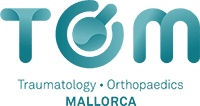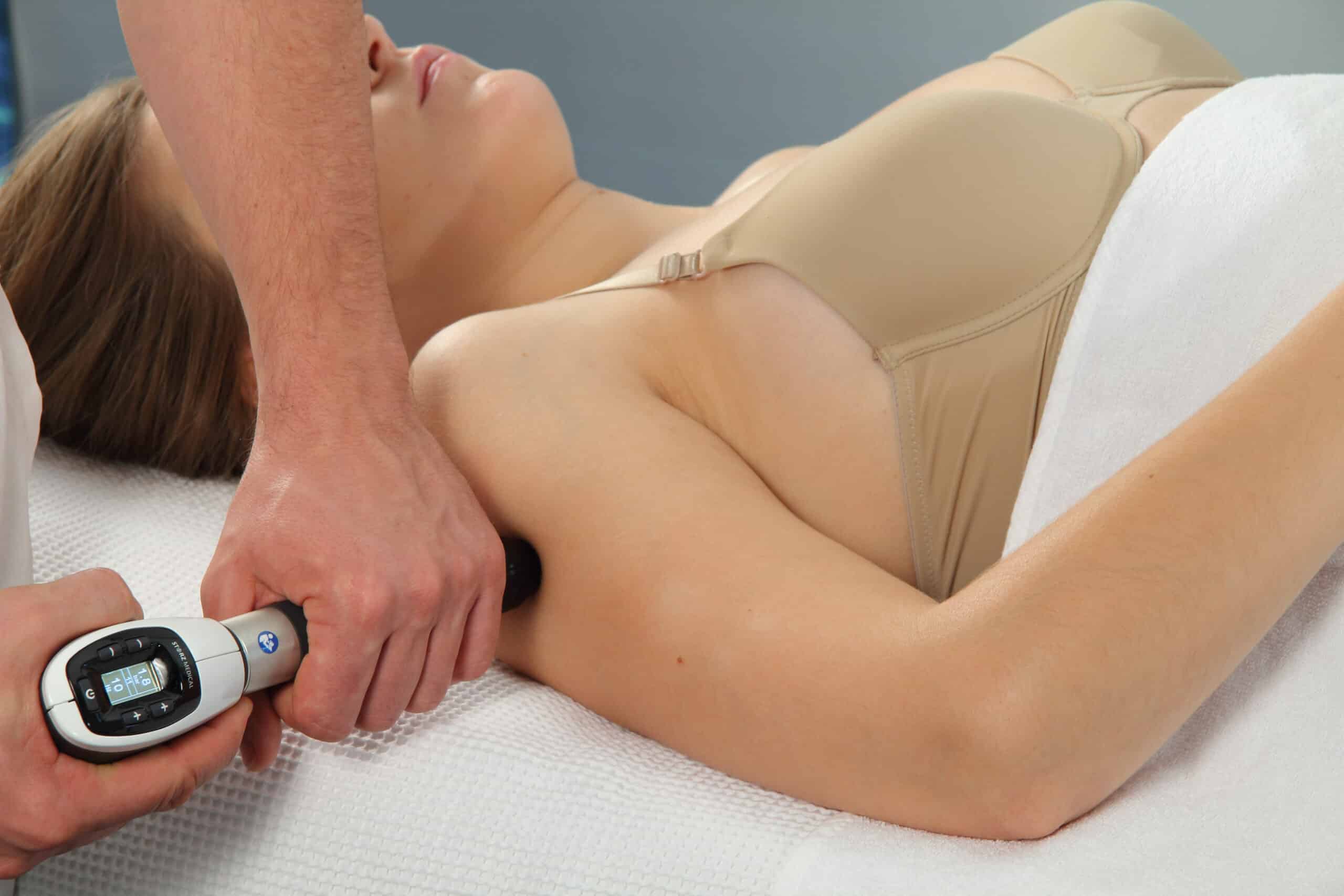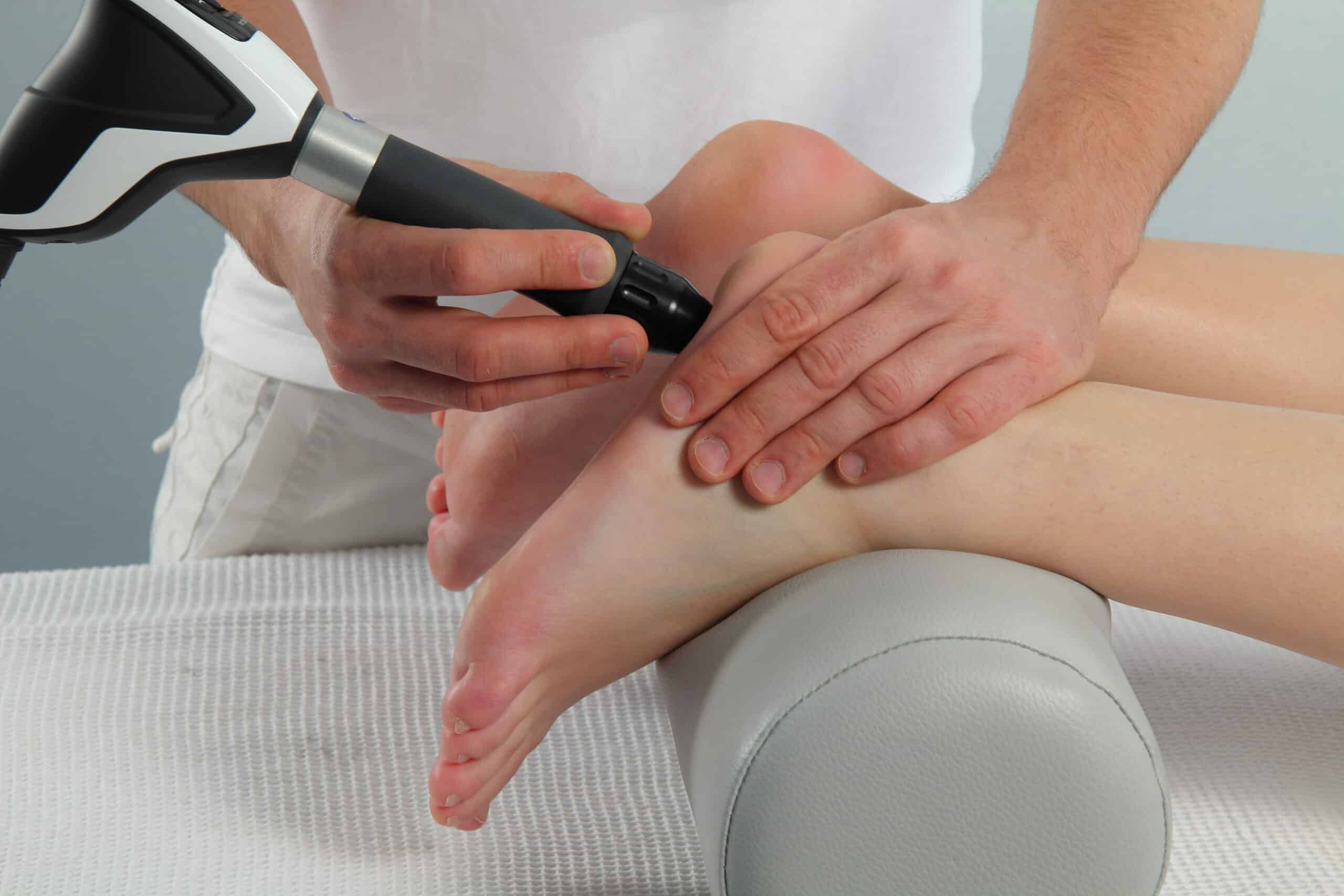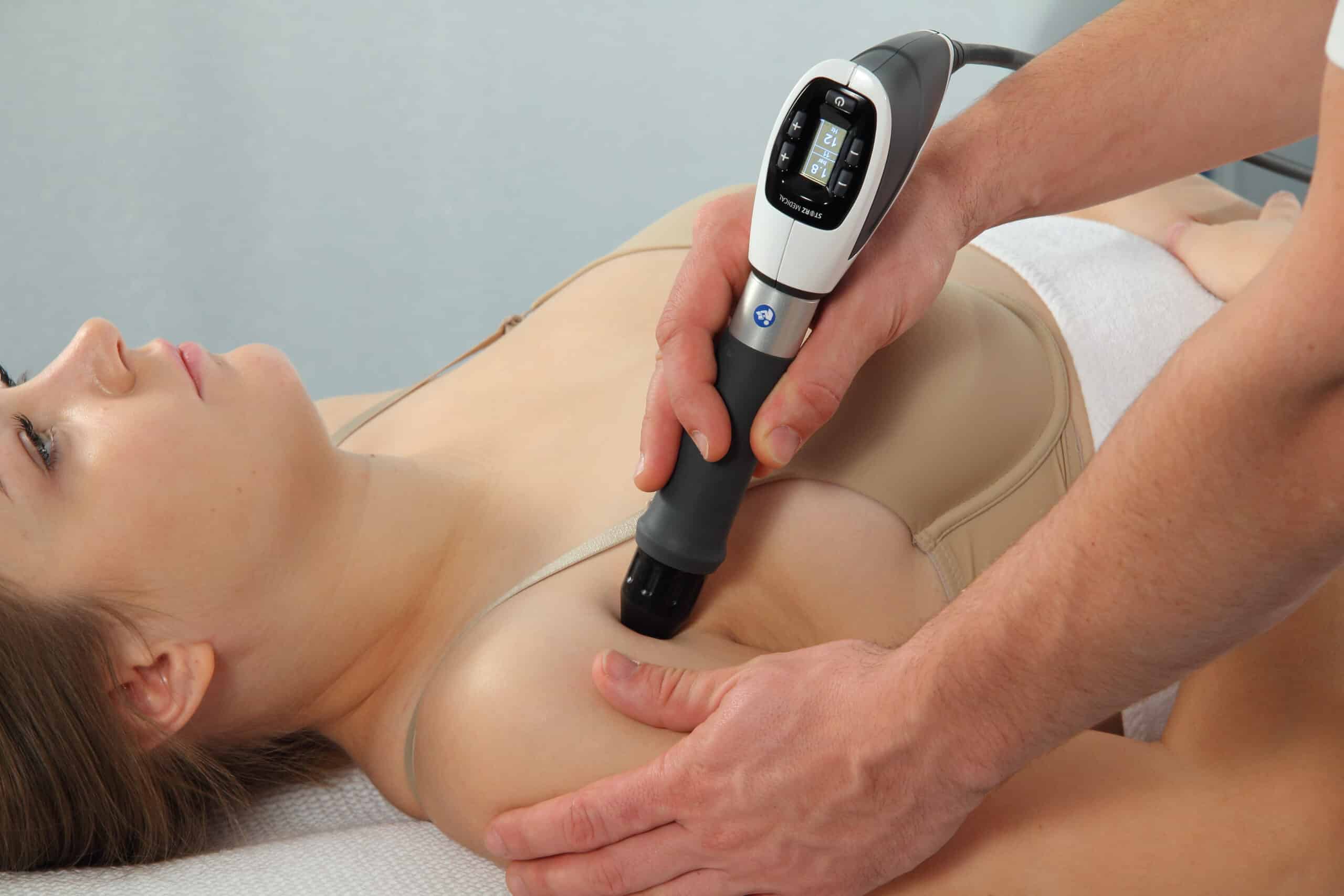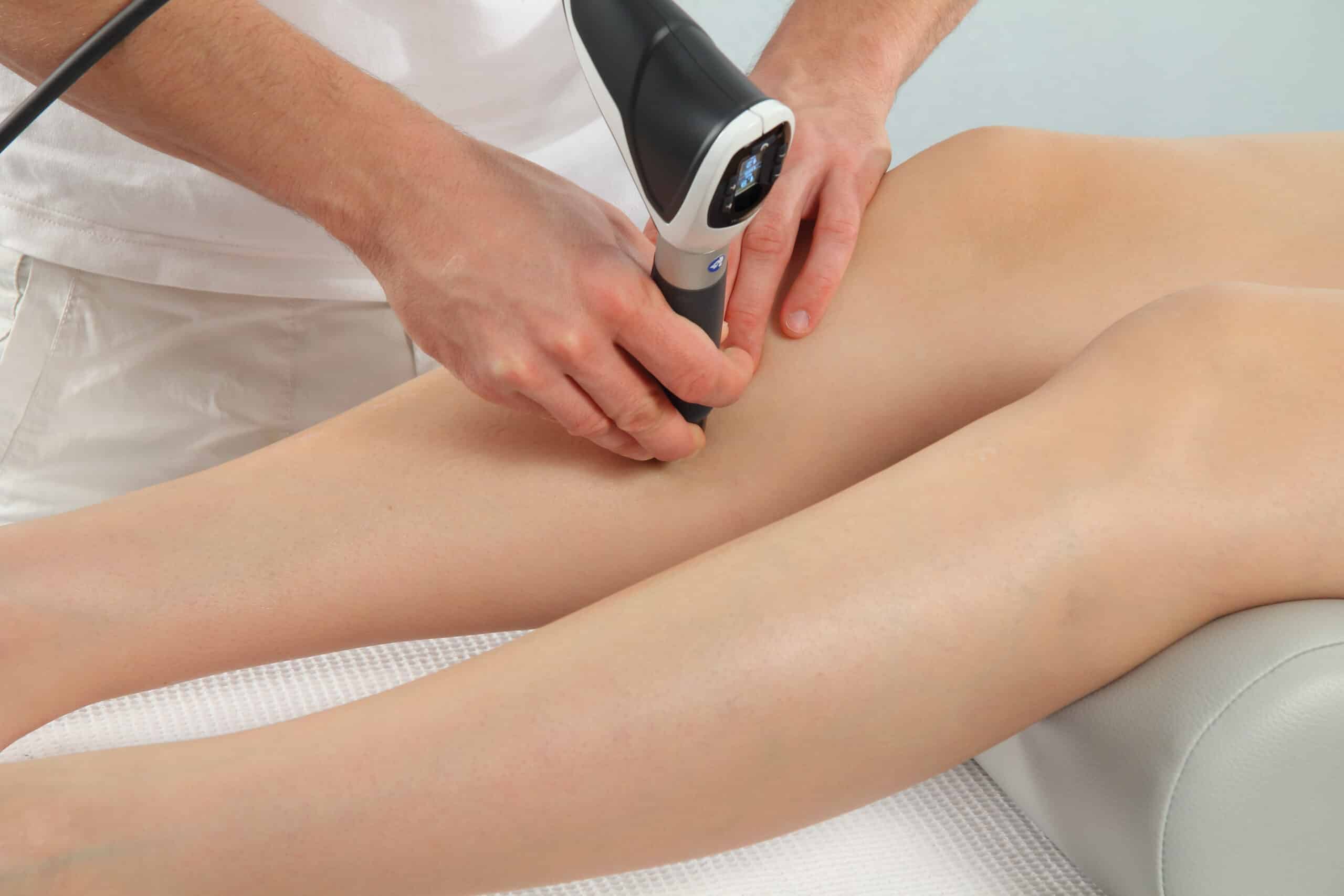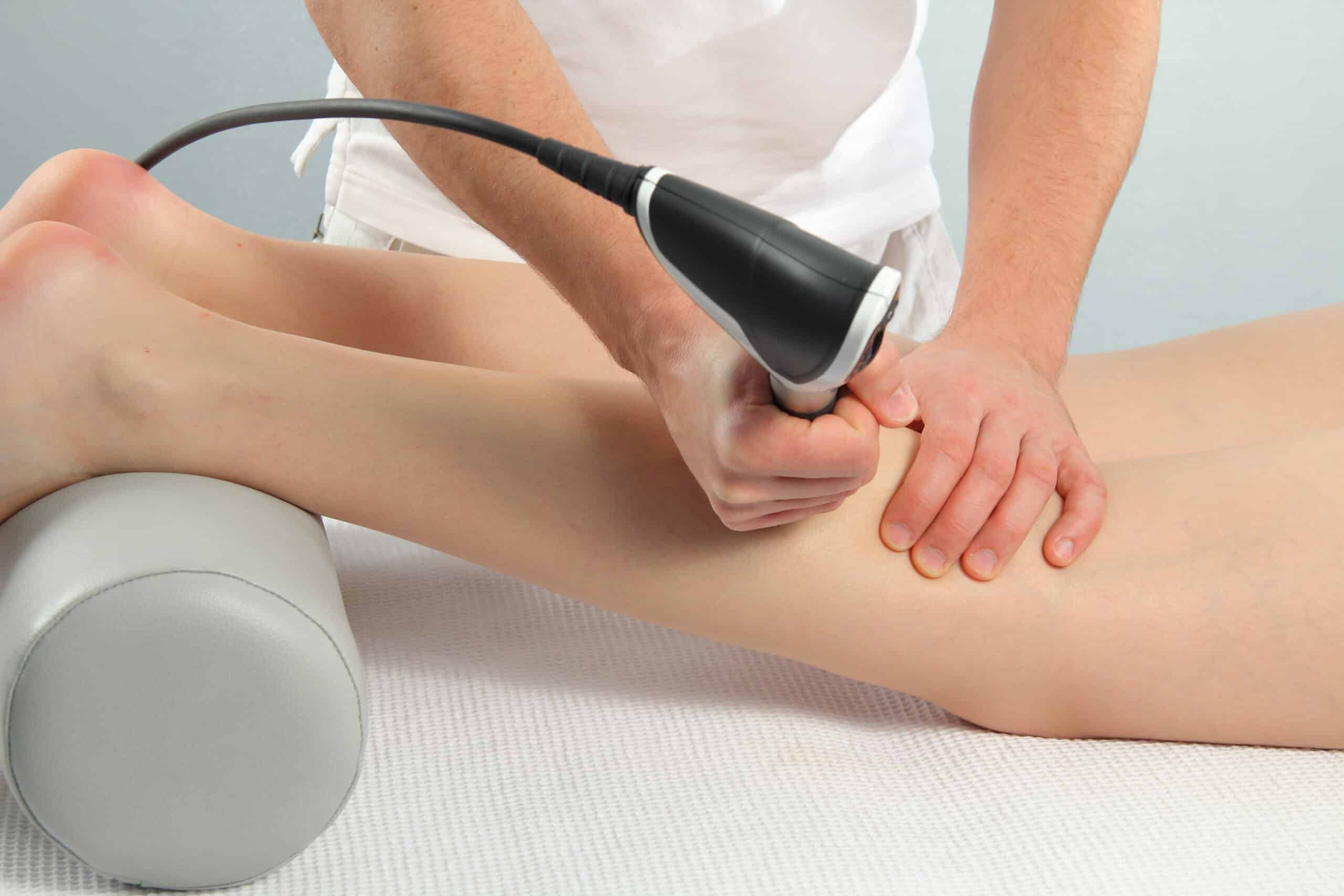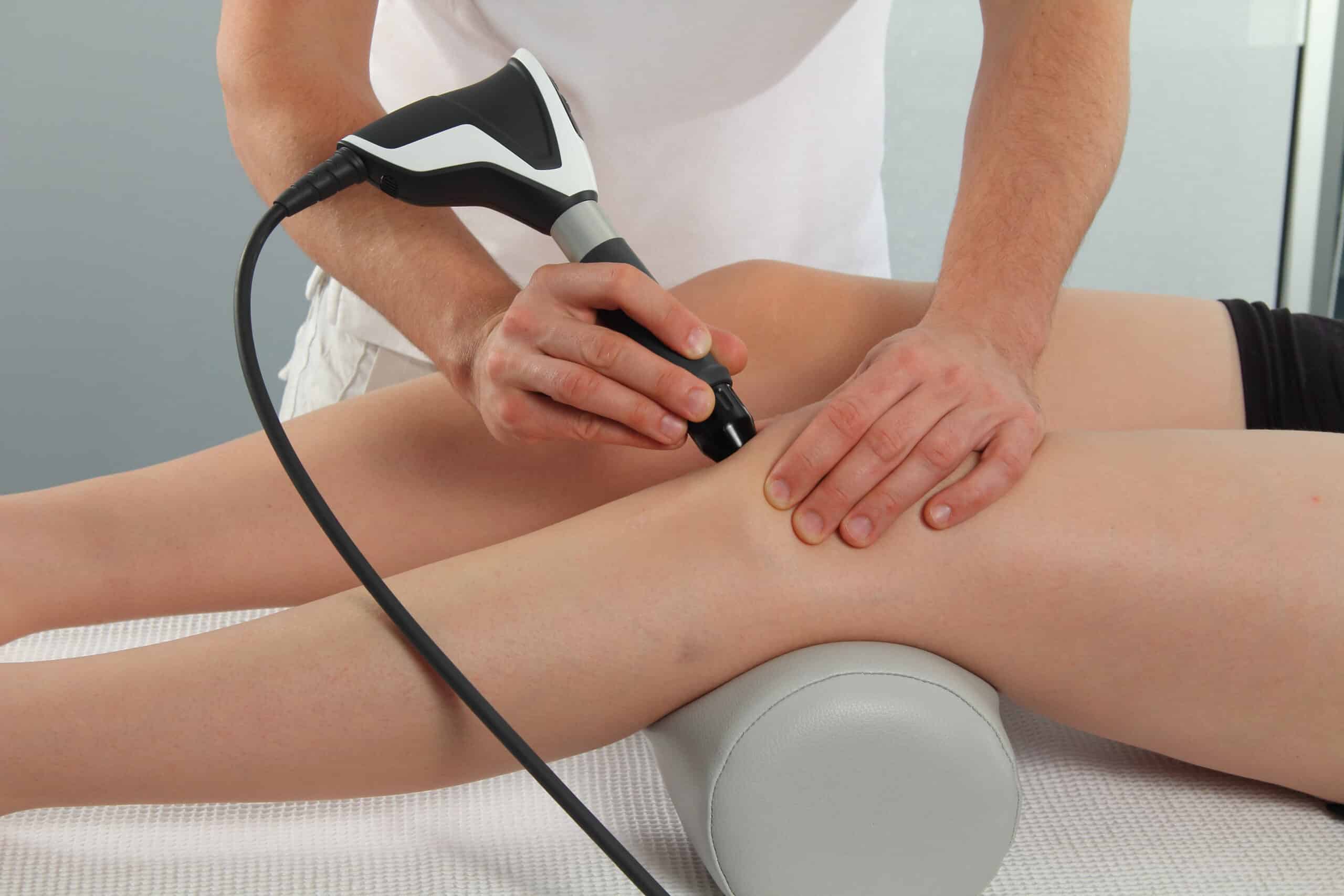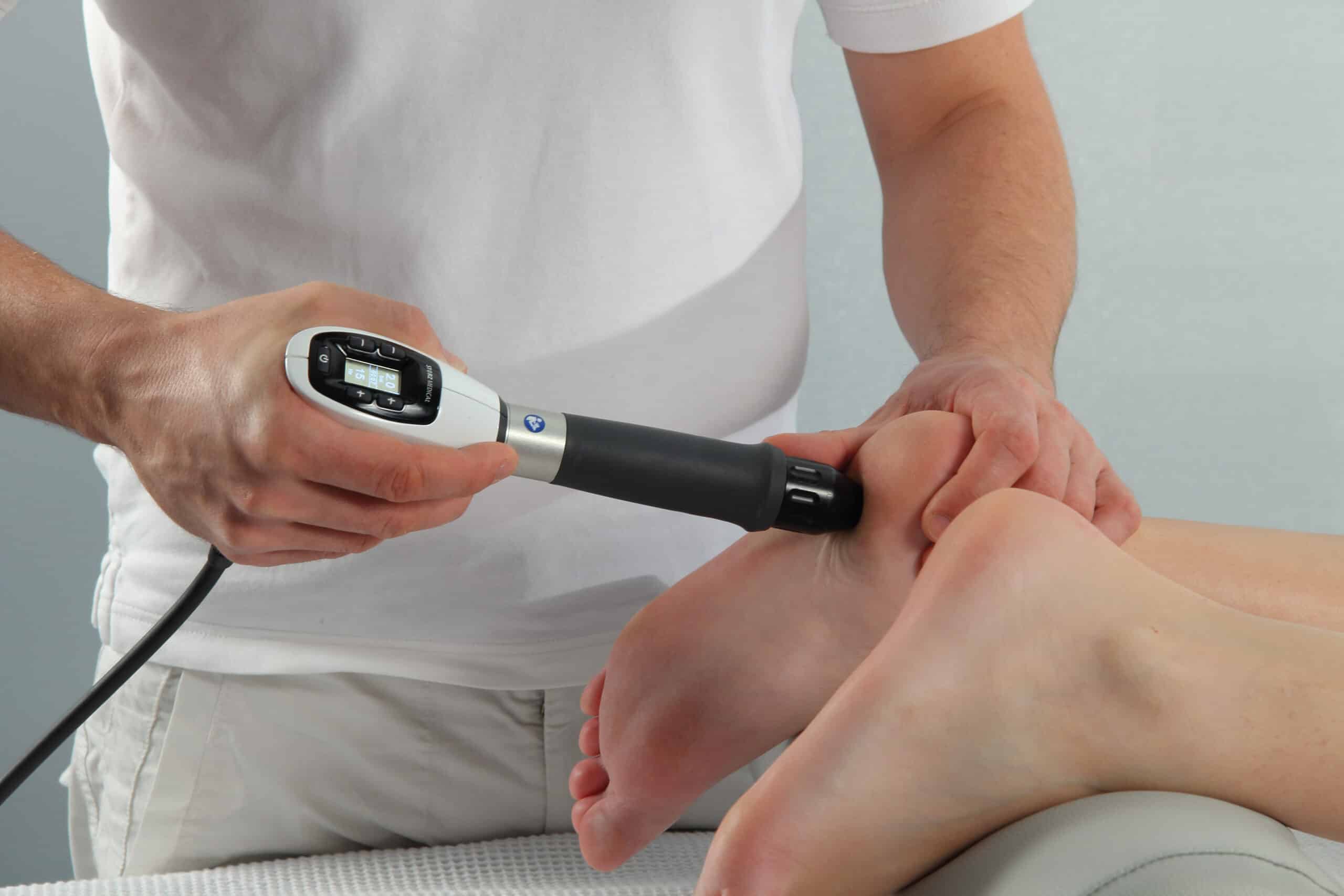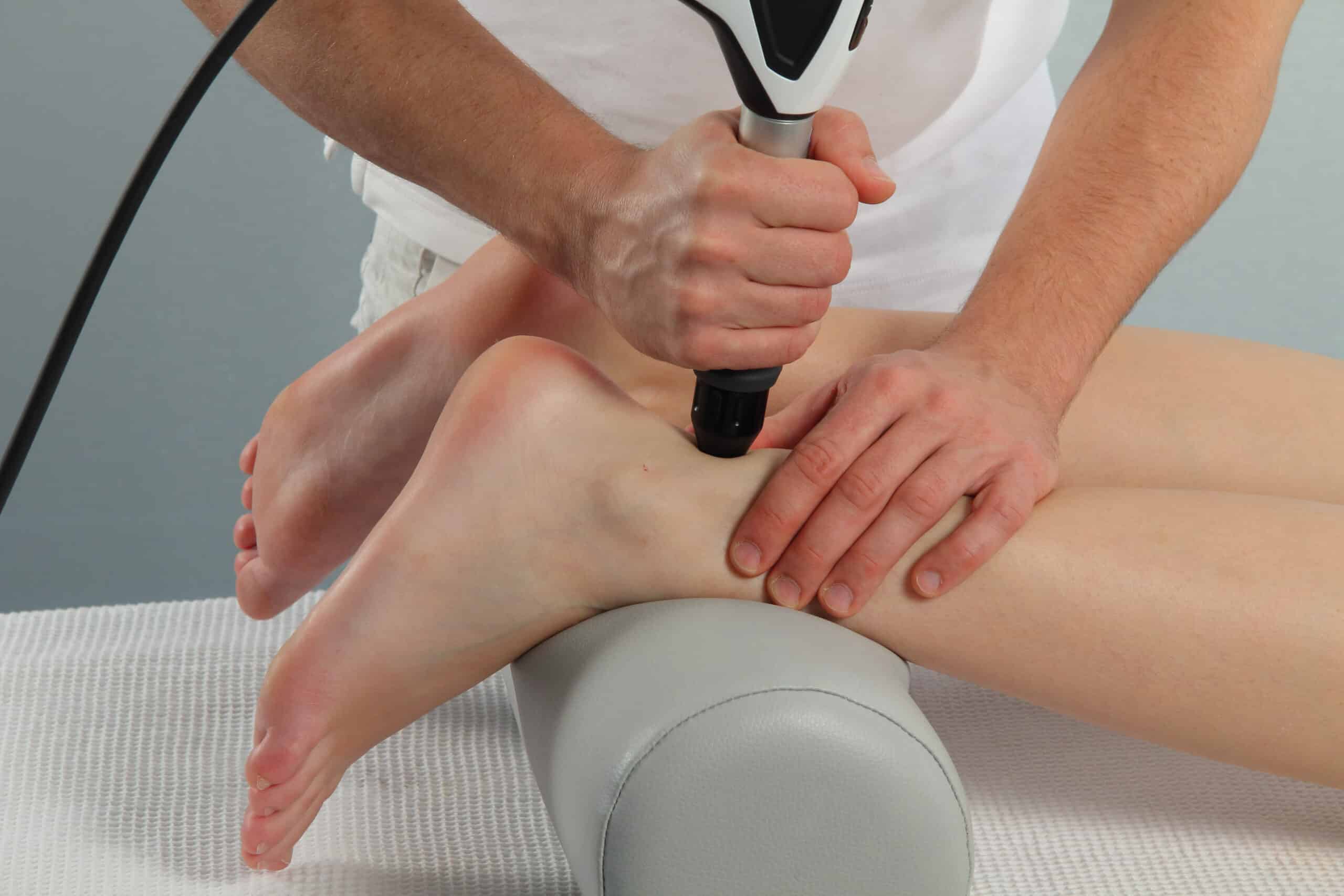Shock wave therapy
The musculoskeletal system (muscles, tendons, bones) reacts to mechanical and physical stimuli. The tendons, bones and muscles are remodeled in response to external stress or targeted training. Shock wave therapy uses special pressure waves that spread through the tissue and thus induce a biological remodeling and healing of the tissue through mechanical-physical stimulation. The treatment not only reduces pain, but also helps to avoid surgery by inducing healing processes.
Main focus
- Tendons and ligaments
- Muscle and fascia
- Bones
History
Shock waves are acoustic waves that are marked by a very rapid increase in pressure. They spread in the tissue and can transmit energy through their wave-like spread. Such pressure waves can also break windowpanes in the atmosphere. At the end of the 1960s, shock waves were artificially generated and used for therapeutic purposes. Here shock wave treatment first revolutionized the urological treatment of patients with kidney stones (“kidney stone shatterers”) and in many cases made operations unnecessary.
In the following years, it was quickly found that the application of shock waves can also initiate healing processes in various other tissues (improved blood circulation, release of growth factors, improvement of the metabolism). For example, special devices for orthopedic applications were developed that initiate healing processes in the depth of the body with lower and precisely defined energies. The regenerative properties of shock waves are currently being tested for the treatment of patients with a heart attack, stroke or chronic wounds.
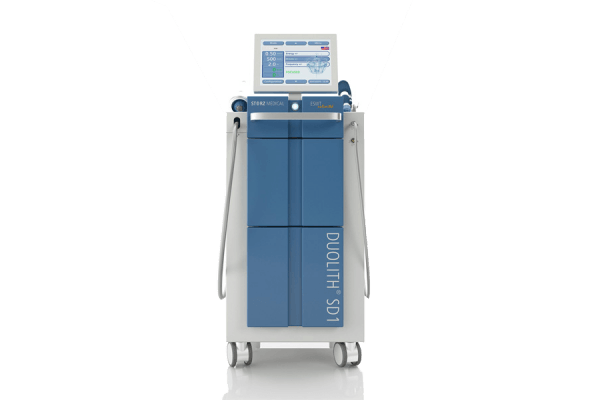
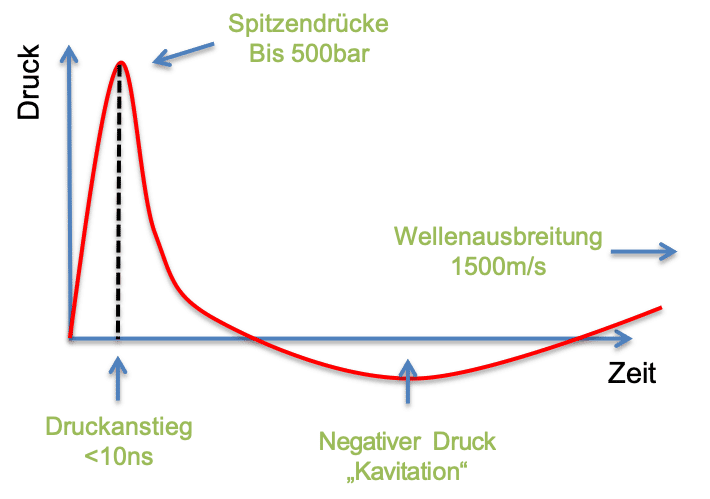
Technology
Shock waves for orthopedic use are mainly generated in 3 different ways:
- Electro-hydraulic (spark discharge between two electrodes)
- Electromagnetic (through a metal membrane)
- Piezoelectric (over crystals)
A normal wave propagates radially, i.e. like waves in the water. This means that the energy of the wave decreases with increasing running distance. In classic shock wave treatment, the shock waves are focused in order to concentrate the energy in a certain focus area (Fig.1). In this way, a specific region can be treated with a high level of energy.
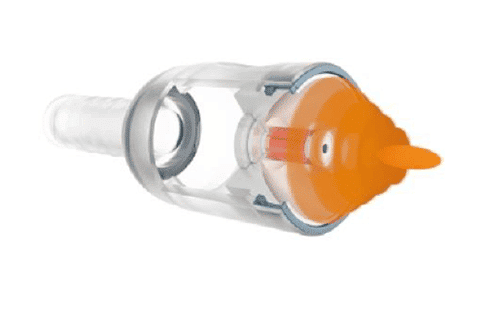
Fig. 1: focused
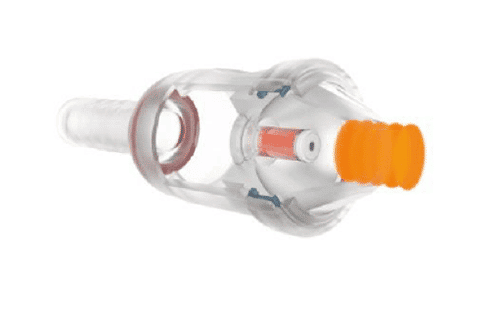
Fig. 2: planar
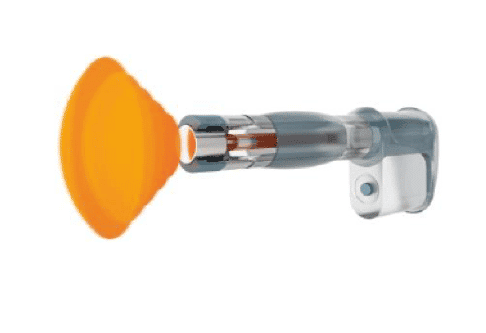
Fig. 3: radial
In addition to the focused shock wave, radial shock wave systems are also used for orthopedic treatment (Fig. 3). From a strictly physical point of view, these are not shock waves, but pressure waves. These are generated by accelerating a projectile using compressed air and releasing its energy when it hits an applicator. It has become common to refer to these pressure waves as “radial shock waves”. These radial shock waves are particularly suitable for superficial applications or in the large-scale treatment of fascia.
In practice, it has proven useful to combine both procedures in order to obtain optimal treatment results.
Applications / Indications
Tendon pathologies
- “Calcifications of the shoulder” (tendinosis calcarea)
- Sole pain, heel spurs (plantar fasciitis)
- Tennis elbow (radial epicondylitis)
- Golfer’s elbow (epiconydlitis ulnaris)
- Achilles tendon problems (achillodynia)
- Triceps tendon calcification (olecranon spur)
- Patellar tendon syndrome (jumper knee)
- Tractus syndrome (runner’s knee)
- Trochanteric tendonitis (hip trochanter)
Spine
- Cervical syndrome (without previous structural damage)
- Lumbar syndrome (without previous structural damage)
- Facet joint osteoarthritis
Bone diseases
- Bone fractures that do not heal or heal with a delay (pseudarthrosis)
- Shin splints
- Circulatory disorders of the bone (osteonecrosis) (ARCO stages 1 and 2)
Muscle problems
- Chronic muscle tension (myogelosis, trigger points)
- Muscular tension of the spine
- Muscle fiber injuries (3-4 weeks after injury)
Shock wave therapy and professional athletes
Rapid regeneration and restoration of full performance is particularly important in competitive professional sports. Shock wave devices were already used in 1996 to treat athletes at the Olympic Games in Atlanta. The advantages were faster regeneration with no relevant side effects that could potentially impair athletes’ performance. Since then, shock wave therapy has become increasingly popular in competitive sports. In the meantime, many sports bases, professional football clubs and cycling teams have their own shock wave devices to treat the athletes with their medical staff directly on side.
The treatment here particularly affects the attachment areas of the tendons and the muscles themselves, which are particularly stressed in competitive sports.
Implementation
For the treatment, the patient lies as relaxed as possible on an examination table. Depending on the localization to be treated, the treatment is carried out in the supine, prone or lateral position. Particularly when treating with a focused shock wave, it is necessary to identify the region to be treated (e.g. limescale in the area of the shoulder) using high-resolution ultrasound.
During the treatment, the shock waves can be felt at the treatment site and, depending on the indication, also somewhat painful. The treatment begins with defined parameters and is adjusted according to the pain sensation of the patient during the treatment. Treatment is given once a week for most indications. In most cases, 3-5 sessions are required to achieve freedom from symptoms. A combination with physiotherapy measures (eccentric strength training) is recommended to ensure long-term therapeutic success.
Side effects
Shock wave treatment can lead to redness and, in very rare cases, to small bruises. Additional side effects such as injuries to vessels or nerves are not to be expected in the hands of an experienced user with appropriate anatomical knowledge. Treatment is carried out personally by the doctor and cannot be delegated to auxiliary staff.
Patients with bleeding disorders or patients taking blood thinning medication (e.g. Marcumar) should not be treated. The following are also considered relative or absolute contraindications:
- pregnant women
- children with an open growth plate
- Lung tissue in the area of the treatment area
- Patients with tumor diseases
- Patients with recent thrombosis
- Patients with infections in the treatment area
- Patients on high-dose cortisone therapy
